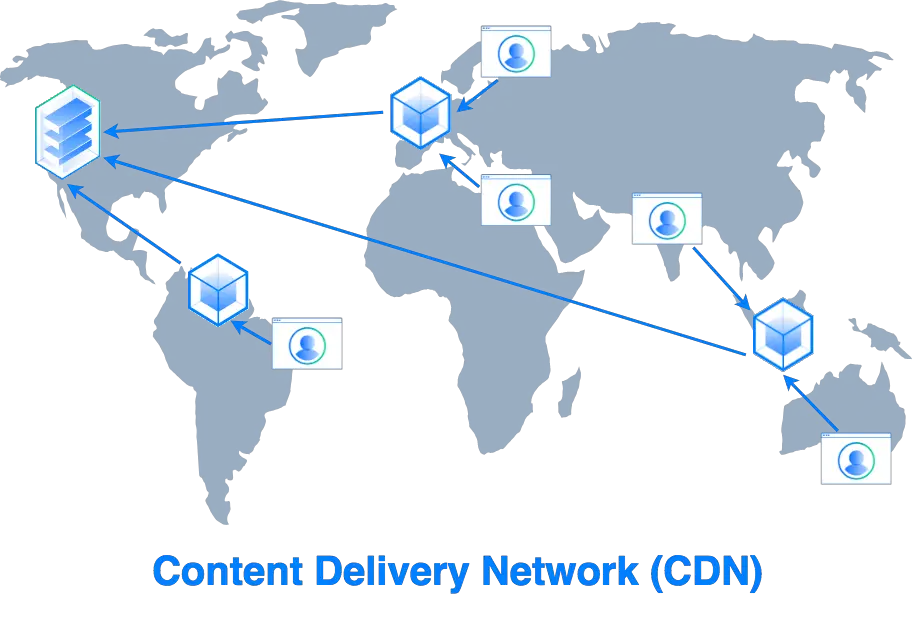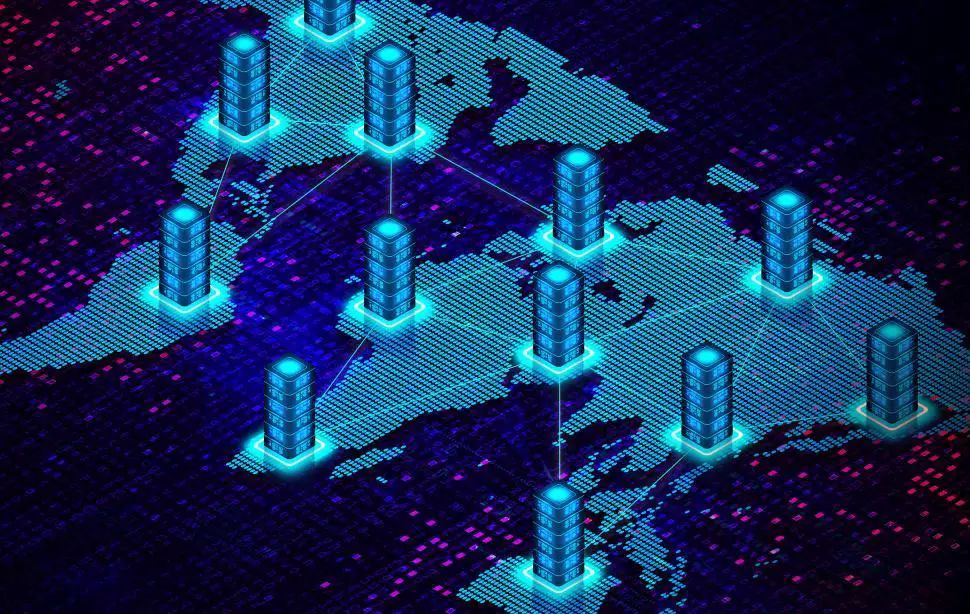CDN Edge Computing: Revolutionizing Content Delivery and Processing

Content delivery networks (CDNs) have long played a crucial role in optimizing the speed and reliability of content delivery. However, the advent of edge computing has unlocked new possibilities for CDN functionality, transforming both content delivery and processing.

Benefits of CDN Edge Computing:

1. Enhanced Content Delivery:
- Reduces latency by bringing content closer to end-users at the edge of the network.
- Improves bandwidth optimization and load balancing to ensure seamless delivery.
- Enables personalized content delivery based on location and user preferences.
2. Real-Time Content Processing:
- Processes content at the edge before delivery, saving bandwidth and reducing latency.
- Supports complex transformations such as image resizing, video encoding, and data filtering.
- Allows for dynamic content generation and customization based on context.
3. Reduced Infrastructure Costs:
- Offloads processing tasks from central data centers to edge locations.
- Eliminates the need for expensive equipment and dedicated server infrastructure.
- Reduces bandwidth expenses by avoiding unnecessary long-distance data transfers.
4. Improved Security:
- Enhances data security by keeping content localized at the edge.
- Reduces the risk of DDoS attacks and malicious content distribution.
- Facilitates compliance with data privacy regulations.
5. New Application Possibilities:
- Enables IoT device connectivity and data processing near real-time.
- Supports augmented reality (AR) and virtual reality (VR) applications with low latency.
- Facilitates the deployment of cloud-native applications at the edge.
Use Cases for CDN Edge Computing:
1. Video Streaming:
- Reduces buffering and improves the quality of streaming video content.
- Enables adaptive bitrate streaming to adjust video quality based on network conditions.
2. Gaming:
- Minimizes latency and reduces lag in online multiplayer games.
- Provides real-time data processing for in-game events and analytics.
3. E-commerce:
- Personalizes product recommendations based on user location and browsing history.
- Optimizes image loading and product search results for improved user experience.
4. Social Media:
- Processes and delivers user-generated content faster and more efficiently.
- Enables real-time filtering and moderation of social media posts.
5. IoT:
- Processes sensor data and performs analytics at the edge, reducing latency and bandwidth requirements.
- Facilitates remote device management and control.
Conclusion:
CDN edge computing is a transformative technology that is revolutionizing content delivery and processing. By bringing content and processing power closer to end-users, it enhances speed, reliability, security, and cost-effectiveness. This technology opens up new possibilities for a wide range of applications, enabling businesses to innovate and deliver superior user experiences. As edge computing capabilities continue to evolve, we can expect further advancements and disruptive use cases that will shape the future of digital content distribution and consumption.# Cdn Edge Computing: Transforming Content Delivery And Processing
Executive Summary
CDN edge computing is a new paradigm that is revolutionizing the way content is delivered and processed. By deploying computing resources at the edge of the network, CDN edge computing can provide significant benefits, including reduced latency, improved performance, and increased security.
Introduction
The traditional model of content delivery involves serving content from a central location, such as a data center. This can lead to high latency, especially for users who are located far from the data center. CDN edge computing solves this problem by deploying computing resources at the edge of the network, closer to users. This allows content to be delivered with much lower latency, resulting in a better user experience.
In addition to reducing latency, CDN edge computing can also improve performance. By deploying computing resources closer to users, CDN edge computing can reduce the load on the network and improve the overall performance of the website or application.
Finally, CDN edge computing can also increase security. By deploying computing resources at the edge of the network, CDN edge computing can help to protect against DDoS attacks and other security threats.
FAQs
- What is CDN edge computing?
CDN edge computing is a new paradigm that is revolutionizing the way content is delivered and processed. By deploying computing resources at the edge of the network, CDN edge computing can provide significant benefits, including reduced latency, improved performance, and increased security.
- What are the benefits of CDN edge computing?
The benefits of CDN edge computing include reduced latency, improved performance, and increased security.
- How can I implement CDN edge computing?
There are a number of different ways to implement CDN edge computing. One common approach is to use a CDN provider that offers edge computing services.
Content Delivery
CDN edge computing can be used to deliver content with lower latency and improved performance. By deploying computing resources at the edge of the network, CDN edge computing can reduce the distance that content must travel to reach users. This can result in a significant improvement in latency, especially for users who are located far from the data center.
Important pieces:
- Reduced latency: CDN edge computing can reduce latency by deploying computing resources closer to users.
- Improved performance: CDN edge computing can improve performance by reducing the load on the network.
- Increased security: CDN edge computing can increase security by deploying computing resources at the edge of the network, which can help to protect against DDoS attacks and other security threats.
- Scalability: CDN edge computing is scalable, which means that it can be used to deliver content to a large number of users.
- Cost-effective: CDN edge computing is a cost-effective way to deliver content with low latency and high performance.
Caching
CDN edge computing can be used to cache content closer to users. This can reduce the load on the network and improve the performance of the website or application. By caching content at the edge of the network, CDN edge computing can ensure that content is available to users even if the origin server is unavailable.
Important pieces:
- Reduced load on the network: CDN edge computing can reduce the load on the network by caching content closer to users.
- Improved performance: CDN edge computing can improve the performance of the website or application by reducing the latency of content delivery.
- Increased availability: CDN edge computing can increase the availability of content by caching content at the edge of the network, which ensures that content is available to users even if the origin server is unavailable.
- Scalability: CDN edge computing is scalable, which means that it can be used to cache content for a large number of users.
- Cost-effective: CDN edge computing is a cost-effective way to improve the performance and availability of content.
Security
CDN edge computing can be used to improve the security of the website or application. By deploying computing resources at the edge of the network, CDN edge computing can help to protect against DDoS attacks and other security threats. CDN edge computing can also be used to implement security features such as firewalls and intrusion detection systems.
Important pieces:
- DDoS protection: CDN edge computing can help to protect against DDoS attacks by deploying computing resources at the edge of the network, which can absorb the attack traffic and prevent it from reaching the origin server.
- Firewall: CDN edge computing can be used to implement a firewall, which can help to protect the website or application from unauthorized access.
- Intrusion detection system: CDN edge computing can be used to implement an intrusion detection system, which can help to detect and prevent security threats.
- Scalability: CDN edge computing is scalable, which means that it can be used to protect a large number of users.
- Cost-effective: CDN edge computing is a cost-effective way to improve the security of the website or application.
Analytics
CDN edge computing can be used to collect and analyze data about the performance of the website or application. This data can be used to identify performance bottlenecks and improve the overall performance of the website or application. CDN edge computing can also be used to track user behavior and identify trends.
Important pieces:
- Performance monitoring: CDN edge computing can be used to collect and analyze data about the performance of the website or application. This data can be used to identify performance bottlenecks and improve the overall performance of the website or application.
- User behavior tracking: CDN edge computing can be used to track user behavior and identify trends. This data can be used to improve the user experience and increase conversion rates.
- Scalability: CDN edge computing is scalable, which means that it can be used to collect and analyze data for a large number of users.
- Cost-effective: CDN edge computing is a cost-effective way to improve the performance and user experience of the website or application.
Conclusion
CDN edge computing is a new paradigm that is revolutionizing the way content is delivered and processed. By deploying computing resources at the edge of the network, CDN edge computing can provide significant benefits.
CDN edge computing can improve the overall performance of the website or application, increase security, and reduce costs. As the demand for content continues to grow, CDN edge computing is expected to play an increasingly important role in the delivery of content to users.
Keyword Tags
- CDN edge computing
- Content delivery
- Caching
- Security
- Analytics
